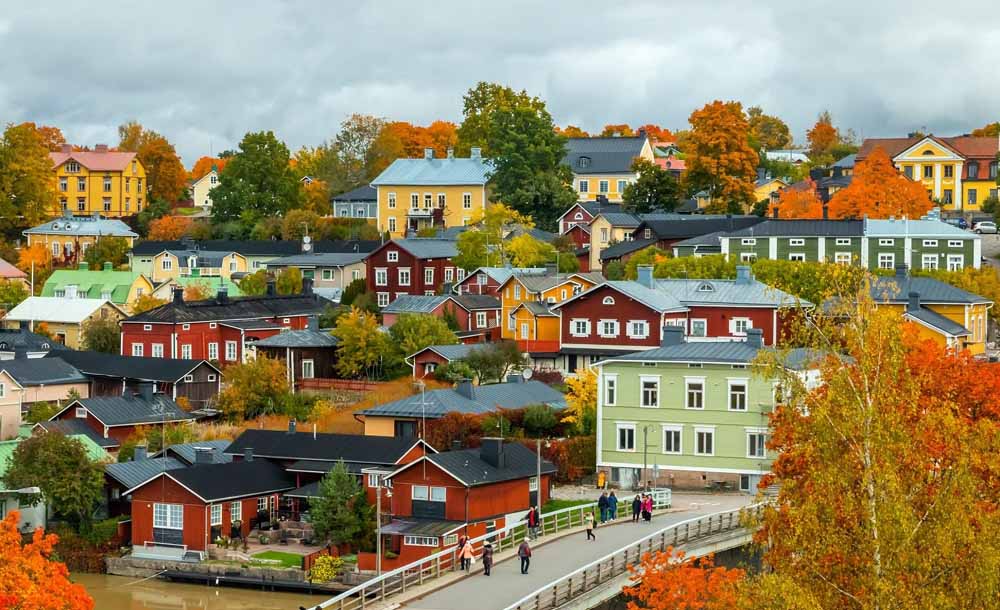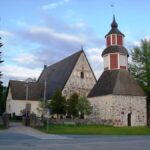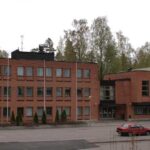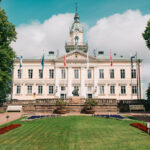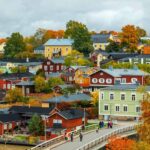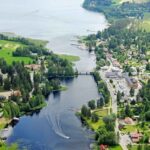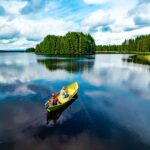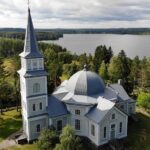Where is Finland? Finland Scandinavia: A country with pristine nature extending from its southern lakes and the capital Helsinki to the beautiful northern polar regions. The country covers an area of approximately 338,465 square kilometers, almost the size of Germany, but with a much smaller population. With a population of around 5.5 million, it is one of the least populous countries in Europe and offers a very high quality of life.
Finland declared its independence from Russia on December 6, 1917. The country became a member of the European Union in 1995, leading to significant changes in its politics and society. Most people in this country speak Finnish, and alongside that, there is a Swedish-speaking community, making up about 5% of the total population.
Where is Finland in Scandinavia?
Finland is the northernmost country in Europe, attracting tourists with fascinating natural phenomena like the Northern Lights. It has diverse national parks, most of which are located in Lapland. Winter activities are an integral part of life in Finland, including skiing slopes and the opportunity to experience dog sledding. Even car drives or hiking can offer memorable moments due to the stunning roads in this country. One of the best Finnish pastimes is visiting the sauna. The Finnish sauna is a sanctuary feature, and people go to the sauna at least once a week.
Geographic Location of Finland in Scandinavia
Finland, located in Northern Europe, covers an area of 338,000 square meters. It shares borders with Sweden to the west, Norway to the north, and Russia to the east. Its southern shores are surrounded by the Gulf of Finland, and more than two-thirds of the country are covered by forests.
Out of the total area of 338,455 square kilometers, nearly 35,000 square kilometers consist of internal waters. Over 187,000 lakes are scattered throughout the country, earning Finland the title “Land of a Thousand Lakes.” In addition, about 52,000 square kilometers of the marine area belong to the national territory, and one-third of the country is within the Arctic Circle. This makes Finland one of the northernmost countries globally.
Finland shares borders with four countries:
- Russia: Approximately 1,340 kilometers.
- Norway: Approximately 736 kilometers.
- Sweden: 614 kilometers.
- Maritime boundary: 1,250 kilometers.
Population of Finland
Approximately 5.5 million people live in Finland. The country exhibits a clear population gap, with the northern and southern regions significantly varying. While southern Finland has a population density of 62.6 people per square kilometer, northern Lapland has only 1.8 people per square kilometer. Most people in Finland live around major cities in the south and central regions, with the Helsinki metropolitan area accommodating around 1.6 million people. Finland’s population is continuously increasing, but in comparison to other European countries like Germany, it has a very low population.
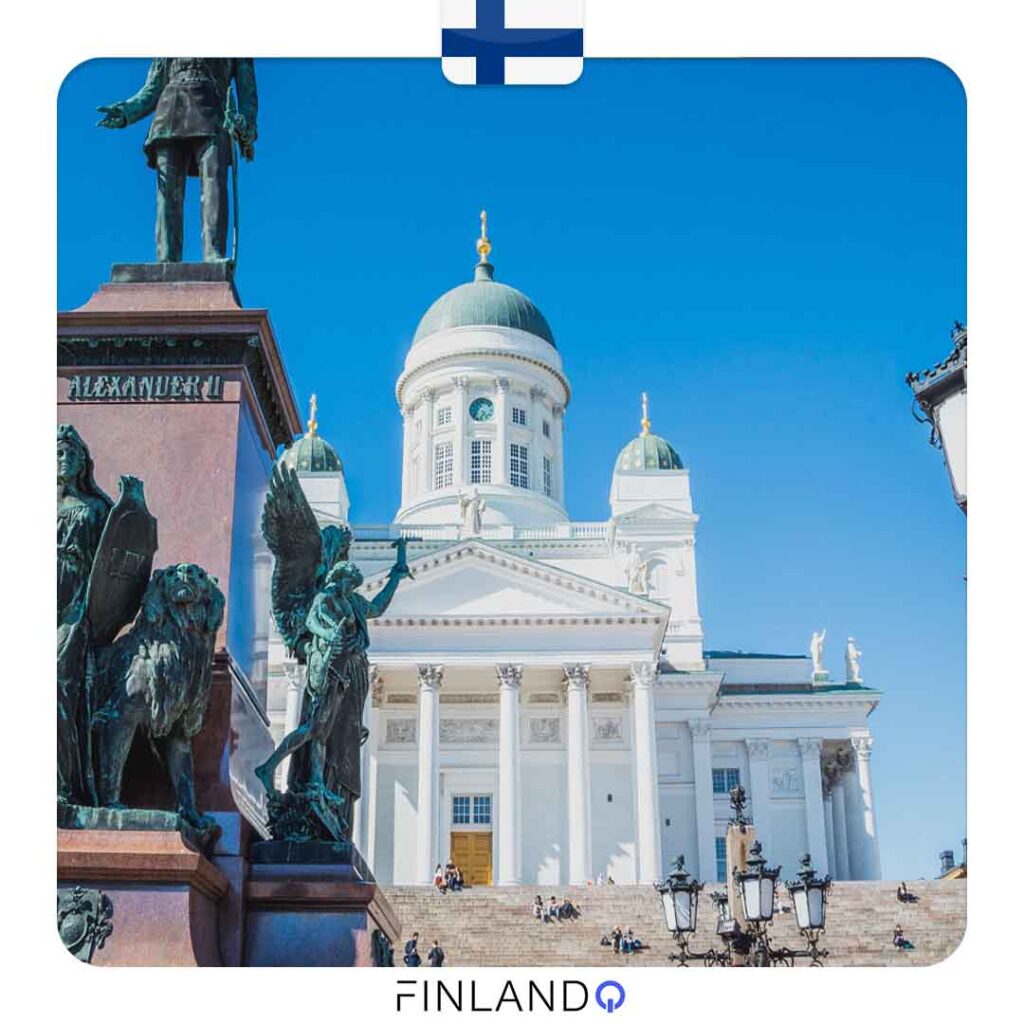
Time Zone in Finland
Finland’s time zone is almost the same as that of its neighboring countries and one hour behind Moscow. Finland follows the Eastern European Summer Time (EEST) +0300 UTC as its standard time. EET is two hours ahead of Coordinated Universal Time (UTC+02:00), and EEST is three hours ahead (UTC+03:00).
Weather in Finland
Finland experiences four distinct seasons. Its summer lasts about three months, from June to August, with maximum temperatures ranging from 25-30 degrees Celsius, and an average temperature of around 18 degrees. June and July might see a high number of mosquitoes, but various repellents are available to protect against these pests. Snowfall usually begins in December, and people in Finland witness more snowfall in March compared to other months. This time is the best for visiting for those who are fond of winter sports.
Official Languages of Finland
Finland Scandinavia is officially bilingual: 92.9% of its population considers Finnish their mother tongue, and about 5.8% speak Swedish from birth. Approximately 1,700 people in Lapland speak the Sami language. Given that the Finnish language is native to only 5 million people worldwide, many Finns also speak languages like English, German, or other European languages.
Research has traced the primary Finno-Ugric languages back to 5000 years ago, emerging from the area around modern Lithuania, where they mixed with Indo-European languages. This ensured the development of two languages in the current territory of the State of Finland until the Finnish language we know today was created.
Today, every municipality is either Finnish-speaking or bilingual. The latter applies when at least eight percent or 8,000 residents in an area form a linguistic minority.
Emergency Phones in Finland Ambulance – 112 Fire Department – 112 Police – 112 or 100-22 Information Service for Addresses (Phone, Address) – 118 Key Historical Dates for Finland in Scandinavia
Finland was discovered in the early 8500s BC, but the first people to set foot in this land remain largely unknown to this day. An area in the eastern Urals or in the region of the Volga Bends in present-day Russia is presumed to be the original home of the Finns. In the Middle Ages, both Sweden and Novgorod in present-day Russia laid claims to the land of Finland. In 1323, the Treaty of Nöteborg ceded western, southern, and central Finland to Sweden. The eastern and northern regions temporarily fell into the hands of Russia.
Sweden lost its power in an unusual way in the 18th century. During the Great Northern War from 1700 to 1721, Finland was occupied by the Russians. After a brief period of independence, the state was part of the Russian Empire for about 200 years from the mid-18th century. Following the October Revolution of 1917, Finland declared its independence, which was soon recognized by many countries.
Finland in World War II
After the Molotov-Ribbentrop non-aggression pact between Germany and the Soviet Union in 1939, the Soviet Union showed an interest in taking parts of Finland. On November 30, 1939, the Russian army attacked Northern Europe. The war became known as the Winter War, or the Soviet-Finnish War, and ended in March 1940 with the Moscow Peace Treaty and Finland retaining most of its independence.
About a year later, in June 1941, after the Molotov-Ribbentrop pact was broken by the Soviet Union, Finland joined forces with Germany. During the continued Winter War, Finland reclaimed territories lost to its eastern neighbors and secured the eastern part of Karelia. The war continued in September 1944 with the Moscow Armistice and the return of conquered territories, concluding with the final areas. During this time, Finland ceased military cooperation with Nazi Germany, committing to evict German forces from its territory. The result was extensive destruction in Lapland, the northern part of Finland. The last German troops left the country at the end of April 1945.
Finland in the Post-War Period
During World War II, Finland managed to preserve much of its independence. During the Cold War, while maintaining cooperation with the Soviet Union, it acted neutrally. In the early 1990s, Finland experienced a severe economic crisis, which it has since managed to overcome. Finland joined the European Union in 1995. The Finnish markka was replaced by the euro on January 1, 2002.
Finland: Political System
Finland has been a parliamentary democracy since its independence from Russia. On March 1, 2000, a constitution that remains in force today was enacted. This constitution granted the Parliament and the Government more extensive powers than before while reducing the powers of the President.
The Parliament is a unicameral assembly of 200 representatives elected for a four-year legislative term using proportional representation. Every Finnish citizen aged 18 or over has the right to vote for members of this Parliament.
The Prime Minister is appointed with the consent of the Parliament and, if approved by the majority of the legislature, can begin the work of a new government. As of December 10, 2019, this position is held by Sanna Marin of the Social Democratic Party of Finland. She succeeded Antti Rinne after his resignation. Marin, born in 1985, is the youngest prime minister in Finland’s history.
Finland: Major Cities in a Nutshell
A significant portion of Finland in Scandinavia is rural. Major cities are mainly located in the south and in the central part of the country (as of the end of 2018):
Helsinki (648,042 inhabitants) Espoo (pop. 283,632) Tampere (235,239 inhabitants) Vantaa (228,166 inhabitants) Turku (191,331 inhabitants) Oulu, with a population of 203,567, is the largest city in northern Finland and the fifth largest in the country.
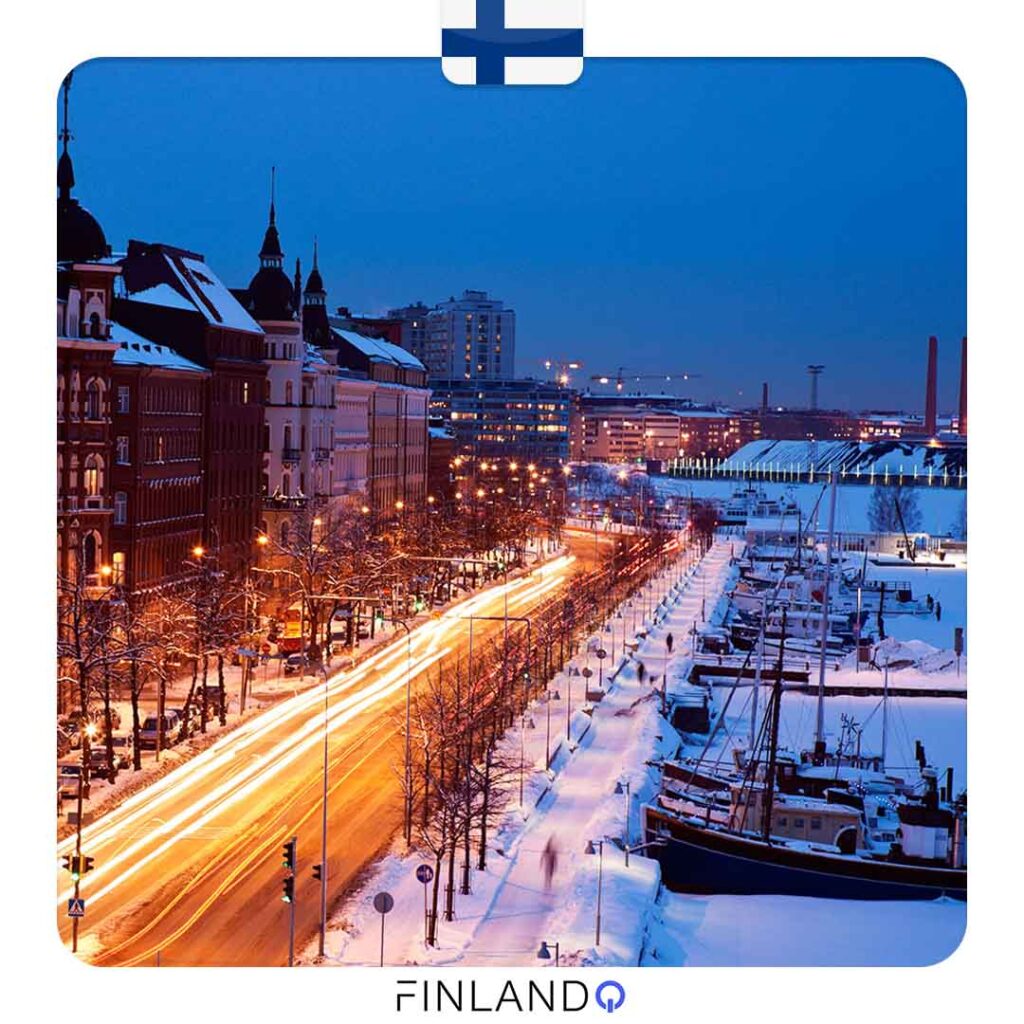
Diet of the Finnish People
Finns usually have breakfast around 7 AM. Breakfast is typically light: some may only drink milk, while others eat a light sandwich, along with coffee and milk. A lunch break is from 11 AM to 12 PM. In small towns, people go home for lunch, and in the capital city, where the distance from home to work is greater, they visit a restaurant or café. The main meal of the day for Finns is lunch, which is much more substantial compared to breakfast and dinner. Around 2 PM, people usually have a cup of coffee or tea, and the workday typically ends around 4-5 PM. Finns have dinner between 5-6 PM, which is usually lighter than lunch and can be a soup or a meat dish.
Economy of Finland in Scandinavia
Finland is an industrial and agricultural country. Approximately 45% of the gross national product is provided by industry and construction, and about 11% comes from agriculture and forestry. Finland’s economy has been increasingly oriented towards foreign markets. Finland produces wood, paper, pulp, forestry machinery, ships, tractors, dairy products, and electrical equipment, which are then exported.
The share of exports of goods and services is about 30%. The largest industrial companies in Finland include Neste (oil refining and petrochemicals), Enso-Gutzeit (wood processing and mechanical engineering), Kemira (chemicals), Vyartsilya (shipbuilding), Nokia (electronics and electrical engineering), Rauma-Repola (shipbuilding and mechanical engineering), and many others.
The industry in Finland
Iron, copper, zinc, nickel, chromite, cobalt, vanadium, lead, graphite, and asbestos are mined in Finland. Finland is a leading producer of machinery and equipment for the pulp and paper industry in the world. Shipbuilding is also under development, with nine shipyards in the country, with the largest ones located in Turku, Helsinki, and Rauma. Finland produces the largest diesel-powered icebreakers, offshore platforms, passenger and cargo ships.
The Finnish wood industry includes wood processing (sawmills), furniture production, and the paper industry (paper, cardboard). Finland has less than 1% of the world’s forest reserves but is one of the countries that produce the most wood products.
If you need advice on immigrating to Finland, you can speak with our experts at the FinlandQ group and get the necessary guidance.

